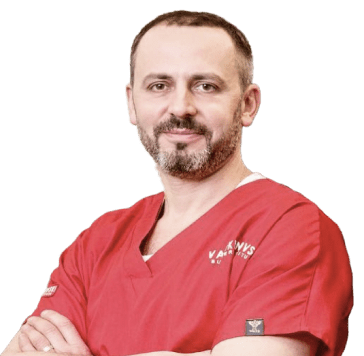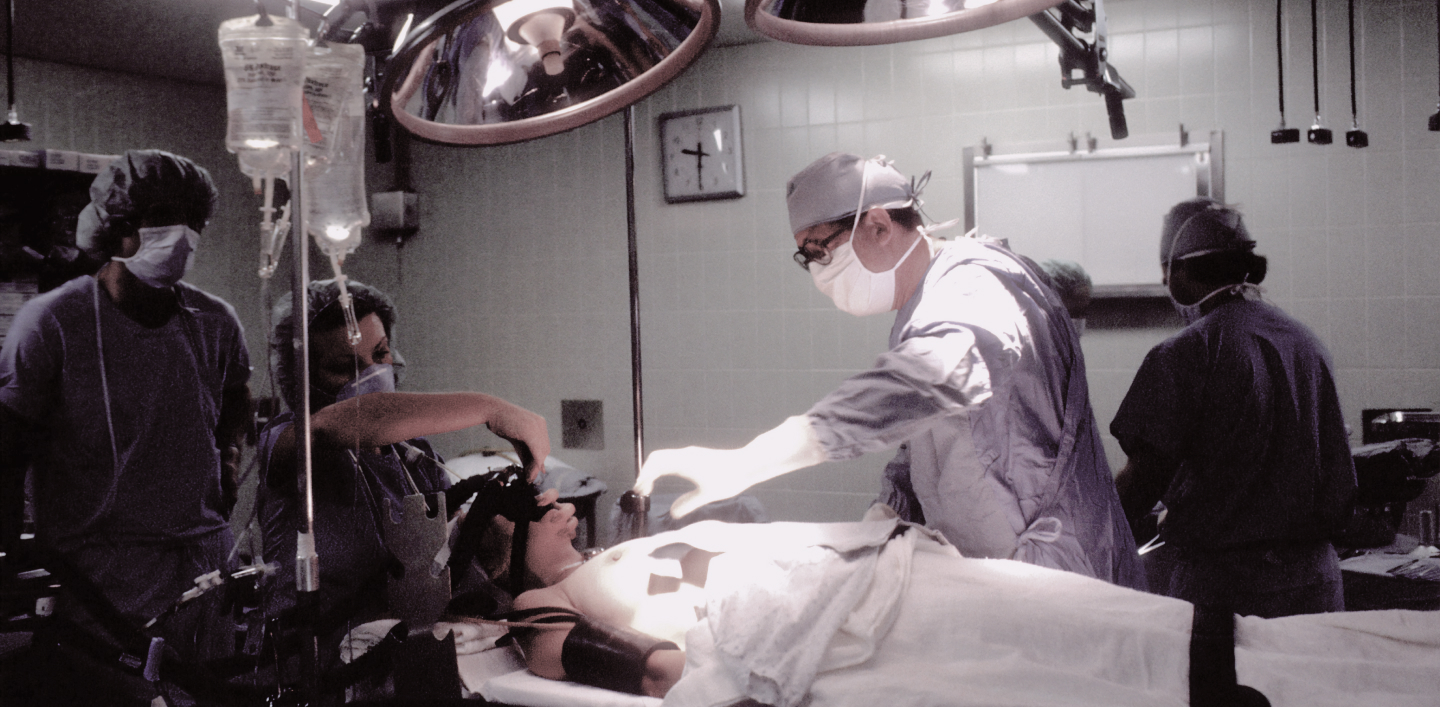

Laparoscopic (from the Greek “lapara” – meaning stomach or groin, and “scopeo” – meaning see or look) or endoscopic (from the Greek “endon” – meaning inside, and “scopeo” – meaning see or look) techniques are employed for surgical hernia treatment. These methods involve specialized laparoscopic (endoscopic) equipment, enabling surgeons to gain an internal view through surgical instruments and perform delicate procedures through small openings.
Hernias occurring around the navel, midline of the abdomen, groin, and thigh that result in physical discomfort, pain, restricted movements, or aesthetically undesirable appearances are eligible for surgical intervention.
Modern hernia treatment employs minimally invasive approaches. This approach employs specialized tools and a video camera inserted into the abdominal cavity through small incisions.
Laparoscopic hernioplasty offers several advantages over conventional open surgery. Notably, it entails a reduced risk of blood loss, quicker recovery periods, and diminished postoperative pain. Moreover, laparoscopic hernioplasty is a precise technique enabling surgeons to view procedure details on a large screen, ensuring meticulous accuracy.
During laparoscopic hernioplasty, surgeons can execute diverse procedures to correct hernias, encompassing hernial protrusion removal and addressing underlying causes. This method proves safe and effective, facilitating rapid postoperative return to normal activities.




Uncomplicated and complicated umbilical hernia
Uncomplicated and complicated inguinal hernia
Uncomplicated and complicated hernia of the white line of the abdomen
Uncomplicated and complicated femoral hernia
Uncomplicated and complicated diaphragmatic hernia (hernia in the opening of the diaphragm – the muscle that separates the chest and abdominal cavities)
Uncomplicated and complicated ventral postoperative hernia (hernia in the place of the postoperative scar on the anterior abdominal wall)
Gilmore's hernia (Gilmore, "sports" hernia – hernia-like changes in the inguinal canal due to significant physical exertion)
Congenital internal hernia (protrusion of internal organs inside the peritoneal folds)
Post-traumatic hernia (after injury)
Inguinal hernia
Perineal hernia
Spieghel hernia (or semilunar line hernia, lat. linea semilunaris – a type of abdominal wall hernia)
Obturator hernia (lat. herniae obturatoriae, obturator hernia, is a pathology of the pelvic area, when the hernia is formed through the obturator hole between the buttock and pubic bones)
Paraesophageal hernia (hernia through the esophageal opening of the diaphragm, a type of diaphragmatic hernia)
Larrey-Morgagni hernia (a type of diaphragmatic hernia, a defect in the development of the diaphragm with the formation of a hernial opening in the area of the iliac-costal triangle)
Bohdalek hernia (lumbocostal hernia – a type of diaphragmatic hernia, the hernial opening of which is located in the area of the lumbocostal triangle)
Winslow orifice hernias (hernias of the omental orifice – internal hernias of the abdomen, the opening of which is limited by the liver and ligaments of adjacent organs)
Supravesical hernia (lat. hernia supravesicalis interna – protrusion through the supravesical fossa, and then either through the inguinal canal as an external hernia, or in front, behind or outside the bladder as internal hernias)
Paracecal hernia (lat. hernia paracaecalis interna – an internal hernia with an opening near the cecum)
Mesenterico-parietal hernia (lat. hernia mesenterico-parietalis interna – internal hernia between the mesentery and the wall of the abdominal cavity)
Periduodenal hernia (lat. hernia paraduodenalis, hernia Treitzi, – internal hernia through the duodenum-small intestinal recess)

Our doctors are available for consultations not only in Ukraine but across the world. Consultations can take place in person at our clinic in Kyiv or online via pre-arranged appointments. We offer comprehensive diagnostics, treatment, and preventive measures.
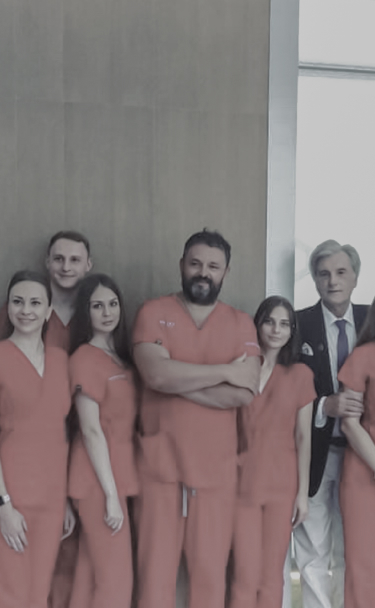
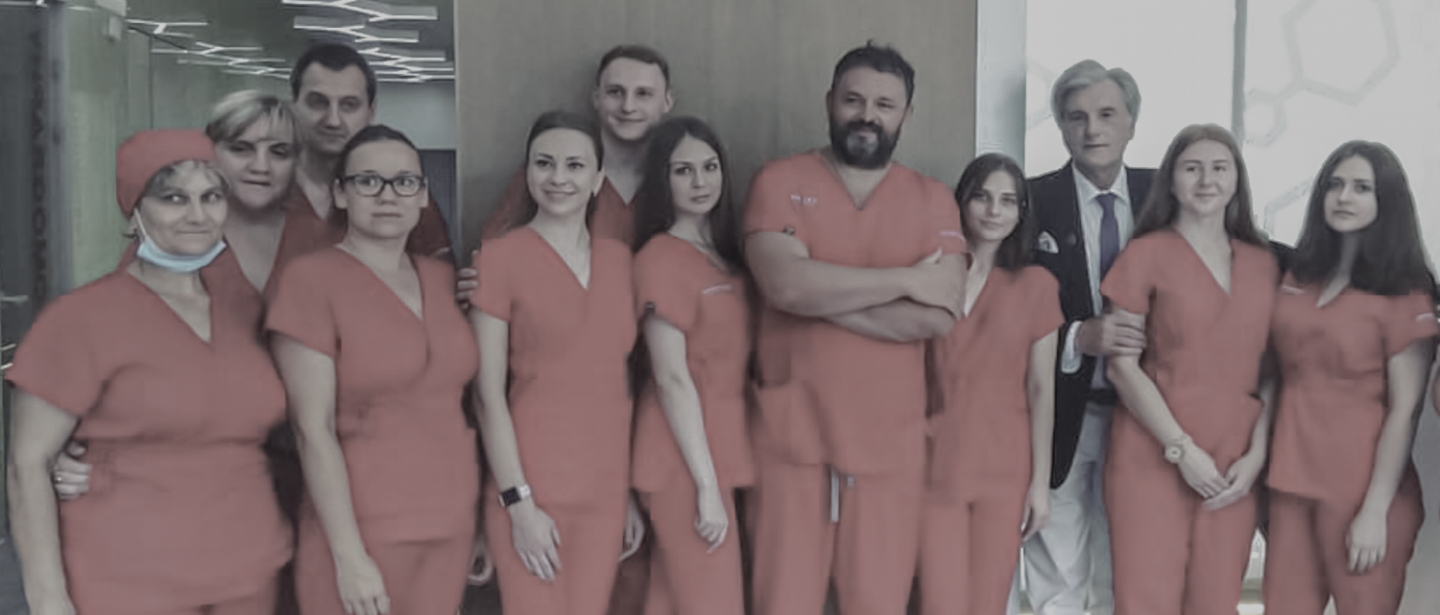
Years of experience
Patients
A modern clinic in the center
Successful operations
Unique surgical techniques
Branch of surgery
Units of the latest equipment
Charitable surgical assistance




Laparoscopic hernioplasty is performed on the LEMKE endoscopic stand.
Total One day stay in the hospital.
Seamless technique, painless method, quick rehabilitation after surgery, only 1-2 days.
Compared to competitors, the operation time is 2.5-3 times shorter, and the rehabilitation period is 3.5-4 times shorter, respectively.
All, without the exception of hernioplasty, are performed laparoscopically.
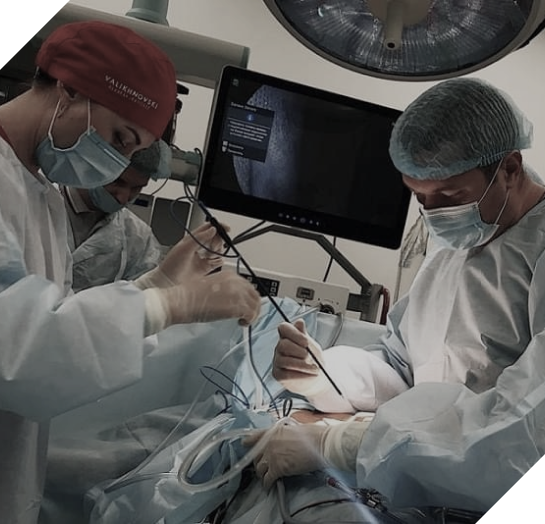
You should seek advice from a surgeon concerning a hernia if you experience the following symptoms:



The surgeon's consultation encompasses:


Questionnaire (the doctor will inquire about complaints, medical history, and lifestyle).
External clinical assessment (meticulous examination, palpation, and investigation of all altered areas, local lymph nodes, and the state of each organ system).
Laboratory testing (both general clinical tests and specialized ones, including the study of specific tumor markers - substances aiding the assessment of potential tumor development).
Instrumental examination (to ascertain the general body condition and specific areas with alterations, such as X-ray (CT), magnetic resonance imaging (MRI), positron emission tomography (PET), etc.).
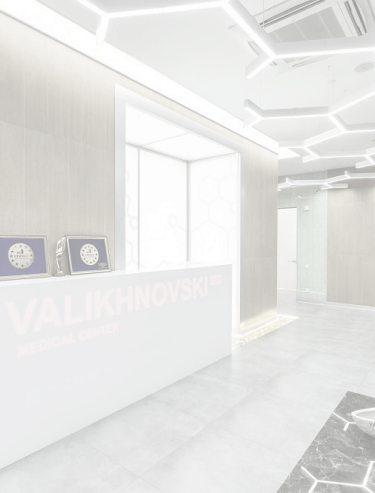


The main danger of hernias is that if they are strangulated, life-threatening conditions may develop, as blood circulation is disturbed in the compressed contents of the hernial sac, tissues die, inflammation of the peritoneum and internal organs, intoxication develop.




Laparoscopic hernioplasty for uncomplicated umbilical hernia
Laparoscopic hernioplasty for uncomplicated inguinal hernia
Laparoscopic hernioplasty for uncomplicated hernia of the white line of the abdomen
Laparoscopic hernioplasty for uncomplicated femoral hernia
Laparoscopic hernioplasty for uncomplicated diaphragmatic hernia
Laparoscopic hernioplasty for uncomplicated ventral postoperative hernia
Laparoscopic hernioplasty for complicated umbilical hernia
Laparoscopic hernioplasty for complicated inguinal hernia
Laparoscopic hernioplasty for complicated hernia of the white line of the abdomen
Laparoscopic hernioplasty for complicated diaphragmatic hernia
Laparoscopic hernioplasty for complicated ventral postoperative hernia
Transabdominal preperitoneal plastic surgery (TAPP) for inguinal canals
Total extraperitoneal plastic surgery (TEP) for inguinal canals
Intraperitoneal onlay mesh (IPOM) for ventral postoperative hernias
Surgical treatment of Gilmore's hernia (sports hernia)
Surgical treatment of congenital internal hernias (hernia abdominalis internal)
Surgical treatment of post-traumatic hernias
Surgical treatment of inguinal hernias
Surgical treatment of perineal hernias (herniae permeates)
Surgical treatment of Spieghel line hernias
Surgical treatment of hiatal hernia (herniae obturatoriae)
Surgical treatment of paraesophageal hernias
Surgical treatment of Larrey-Morgagni hernia
Surgical treatment of Bohdalek hernia
Surgical treatment of Winslow hernia
Surgical treatment of supravesical hernia (hernia supravesicalis interna)
Surgical treatment of paracecal hernia (hernia paracaecalis interna)
Surgical treatment of mesenteric hernia (hernia mesenterico-parietalis interna)
Surgical treatment of duodenal hernia (hernia paraduodenalis, hernia Treitzi)
Diagnostic laparoscopy in surgery


Inform your doctor about any medications you are taking and follow their guidance (dosage adjustments or restrictions might be necessary).
Adopt a light diet and proper water intake in the days leading up to the surgery. In the presence of constipation, use laxatives and enemas, and avoid alcohol consumption. This ensures a more controlled reaction to anesthesia and other medications.
Abstain from eating for 6–12 hours before surgery, and avoid drinking, chewing gum, or smoking for 2–4 hours prior. This helps prevent the regurgitation of stomach contents into the respiratory system during anesthesia.
On the surgery day, take a shower and cleanse your intestines with an enema. This helps prevent involuntary bowel movements during anesthesia.
Just before surgery:
- remove removable items such as piercing jewelry and prosthetics from the oral and facial areas to prevent accidental entry into the respiratory system or interference with the surgical procedure;
- remove other items like contact lenses, hearing aids, and jewelry to prevent unintentional harm or damage;
- eliminate cosmetic products like makeup, nail polish, and artificial nails from your body to aid visual assessment and automated medical equipment registration;
- empty your bladder and, if necessary, your bowels, to avoid involuntary actions during anesthesia;
- change into the provided specialized clothing at the clinic.
In addition, other preparatory measures may be carried out taking into account the individual characteristics of the organism and the specifics of the surgical intervention

The main stages:
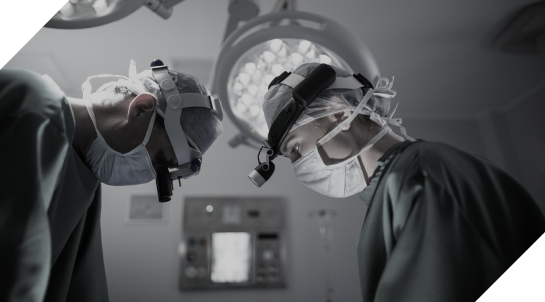


on a gurney or accompanied on foot. Upon entering the airlock room, the patient is provided with a medical cap and shoe covers to prevent the introduction of microorganisms into the operating room environment.
a specialized surgical team tailored to the unique requirements of each operation.
on the operating table, with the specific orientation dependent on the nature of the procedure being performed.
vein puncture in the patient's hand, establishing a catheter for medication administration. Electrodes are placed on the patient's body to monitor cardiac electrical activity. Additionally, a tonometer cuff is positioned on the patient's shoulder, and an oxygen saturation sensor is attached. These measures enable continuous monitoring of the patient's condition throughout the anesthesia and surgical procedures.
are contingent upon the specific objectives, the targeted area of the body, and are aligned with the chosen surgical tactics and technique.
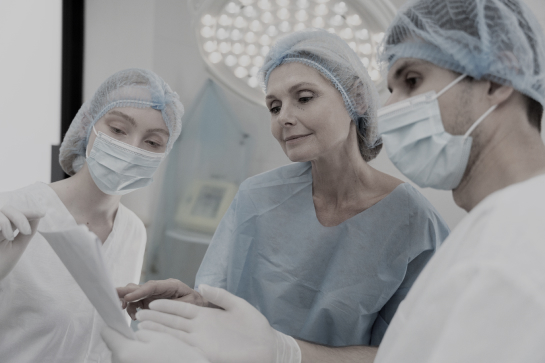
Following the surgery, the patient awakens in the postoperative observation ward. If required, oxygen can be administered through a slender tube to ensure an adequate oxygen supply to the body. The nurse will diligently monitor the patient’s condition and, if necessary, administer medications as agreed upon with the doctor.
Before the patient is ready to return home, the doctor will assess the areas where the intervention took place. Additionally, the doctor will collaborate with the patient to establish a strategy for ongoing rehabilitation and provide further guidance aimed at preventing the recurrence of hernias.






Hernioplasty, also known as hernia surgery, involves the surgical treatment of hernias (derived from Latin hernia – “protruded viscus,” and plasticus – “sculpting” or “forming”). This procedure can also be performed using laparoscopic surgery techniques.
The duration of a hernioplasty operation typically ranges from 30 to 60 minutes.
Guarantee for Surgical Hernia Treatment.
While there may be differing viewpoints on the perceived “simplicity” of hernia surgery, especially for non-complicated cases, it’s important to note that this is a comprehensive surgical procedure involving inherent risks. These risks are often influenced by factors beyond the control of the medical staff and the clinic. The guarantee, in this context, pertains to implants, medical consumables, equipment, appropriate utilization of advanced medical technologies, involvement of highly skilled specialists, and adherence to principles of good clinical practice.
Preparation for laparoscopic hernioplasty operations encompasses preliminary examination and consultation with the surgeon, comprehensive evaluations, and consultations with relevant specialists as needed. Immediate preoperative preparation aligns closely with standard surgical practices, as general herniology forms an integral aspect of surgical procedures.
Potential complications following laparoscopic herniology operations encompass general surgical concerns (bleeding, thrombosis, infectious-inflammatory conditions, etc.), as well as those more specific to this field (postoperative defects, recurrent hernias, etc.). Diligent preoperative preparation, the expertise of highly skilled medical professionals, utilization of modern advanced equipment, and cohesive teamwork among medical personnel within the clinic collectively minimize the risk of complications.
Contraindications for hernioplastic operations encompass conditions in which the severity significantly elevates the inherent risks of surgical treatment. Examples include infectious, mental, and gastrointestinal diseases, among others.


